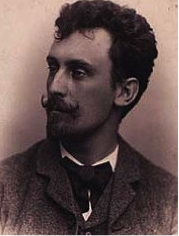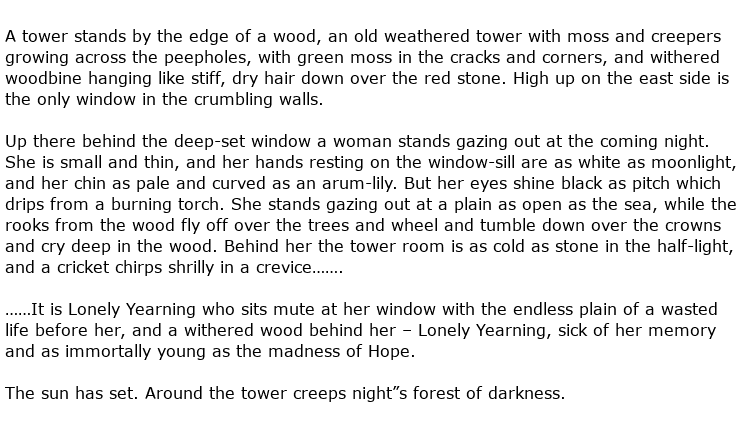 Viggo Stuckenberg was a Danish poet and novelist whose short life spanned the second half of the 19th century and the first few years of the 20th. As a young man he wrote in lyrical style, mostly portraying pastoral subjects. Later on he favoured the Expressionism and Realism movements in literature although critics have said that he could not truly be considered a part of those movements.
Viggo Stuckenberg was a Danish poet and novelist whose short life spanned the second half of the 19th century and the first few years of the 20th. As a young man he wrote in lyrical style, mostly portraying pastoral subjects. Later on he favoured the Expressionism and Realism movements in literature although critics have said that he could not truly be considered a part of those movements.
He was born Viggo Henrik Fog Stuckenberg on the 17th September 1863 in Vridsløselille, the son of a teacher who worked in the state prison. The family moved to Copenhagen and Viggo was educated firstly at the Von Westenske Institute, matriculating in 1884. He then went on to the University of Copenhagen, reading science and theology.
Life seemed to be proceeding in a happy fashion, with marriage followed by two children but, after six years, all of this ended when his wife took their children to New Zealand, accompanied by a married gardener named Hans Madsen. In a peculiar twist, Madsen tired of the new life and returned to Denmark and Mrs Stuckenberg committed suicide soon after. The surviving spouses then married each other! All this time Stuckenberg had been working as a teacher at a school in Frederiksberg while writing poetry.
His first collection was published in 1886 under the title Digte which simply means Poems. Other collections followed during the following years, along with a sprinkling of novels and short stories. His final book was published posthumously, in 1906, and was called Sidste Digte (Last Poems). Danish musical composers such as Svend S Schultz and Emil Reesen took some of his poems and turned them into popular songs.
Stuckenberg had a good reputation as a poet amongst his fellow writers, many of whom were regular contributors to the literary journal Taarnet. He and his wife often hosted literary soirées at their home where new ideas could be exchanged and discussed. His own work was often inspired by Russian authors such as Ivan Turgenev and he was an avid student of eastern European languages. In this regard he often depicted his characters in the same way as a Russian poet might have done, with women seen as the more dynamic sex while men were little more than weak, lazy dreamers.
Although Stuckenberg held his own amongst his contemporaries, he was never regarded as one of the better Danish writers by the reading public. His poetry probably attracted the most praise, but not as much as that written by other Danes such as Sophus Claussen. Much of it was almost biographical in content, describing his life experiences from childhood through to his short and unhappy marriage. More often than not he seemed to be describing a catalogue of accidents and misfortune. He described in vivid detail the pain and sufferings endured by both a husband and a wife whose marriage is on the rocks in two poems – Fagre Ord and Valrovn. Both were written from the point of view of both sides of the struggle, with the former being a joint venture with his second wife Ingeborg.
The following is an extract from one of his poems called Autumn Evening which is written in prose style. It is the bleak tale of a woman’s lonely existence in an old tower as she looks out of a high window, hoping to see something that will make her life better. Here are the opening two verses, and the last:

Viggo Stuckenberg fell ill in 1904, suffering from inflamed kidneys. He died on 6th December 1905 at the age of 42.

